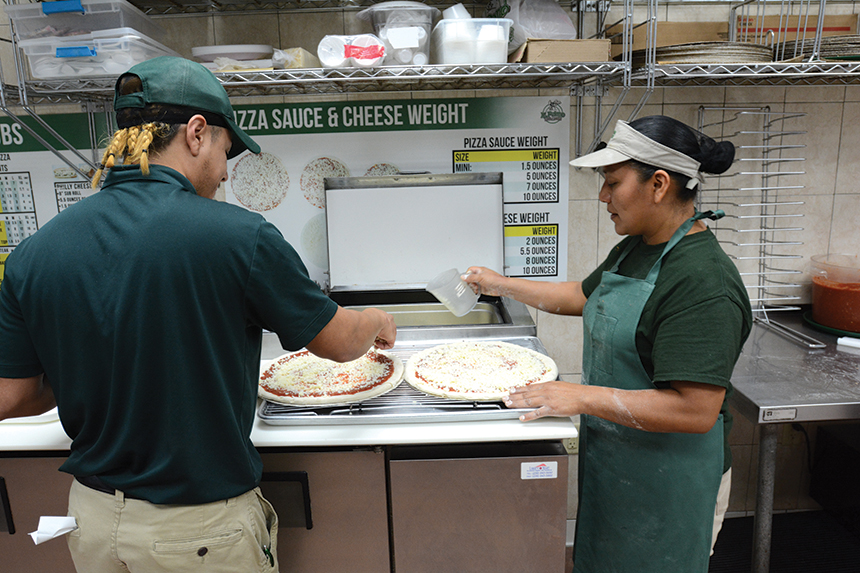

Nick Bogacz, founder and president of Caliente Pizza & Draft House in Pittsburgh
In our last installment, we talked about how important labor cost is to your restaurant’s bottom line and being aggressive when it comes to setting targets for spending in this area. There are two important factors with regards to how you can either meet or come in below your spending goal: cross-training and scheduling.
•Cross-training. The difference between the winners and losers in the labor game are having employees that can do everything — and I mean everything. Having a store where the pizza cook only makes pizzas and never answers the phone, makes a sandwich or cleans a dish is counterproductive. Sure, I believe in having “aces in their places,” but I also believe all employees should be cross-trained in other roles so they have a level of comfort in all aspects of the pizzeria.
During a busy night or when an emergency occurs, you want staffers who can do it all. If a pizza needs to be in the oven, the person on the register can tend to it. If a pizza needs to be cut in a pinch, a server can do it. This makes a team feel like a team — and, frankly, you won’t need to have as many employees on the schedule.
• Scheduling. Writing a well-thought-out schedule is critical to your labor costs. The first step is projecting your weekly sales, drawing on recent weeks to make your estimate. For example, I use the average of the last four weeks of sales. Let’s say that number comes out to $20,000 in net sales. With a targeted 23-percent labor cost, that means you have $4,600 to spend on your weekly schedule.
In this scenario, do not try and run a 23-percent labor cost every day of the week. Rather, try to staff evenly throughout the week, so your labor cost may be lower than the target on a busy night and higher on a slower weekday. If the employees are properly cross-trained, the same level of staff will function successfully on busy nights. As long as you spend the allocated $4,600 or less through the whole week, you’re doing well.
When adding employee wages, remember to account for taxes and benefits like employer contributions. This might change based on your state and tax laws, but for my Pennsylvania-based stores, I add 14 percent for taxes and employer contributions. So if an employee makes $10 an hour, I count them at $11.40 an hour.
While it is up to you to ultimately decide who gets hours and how many, I always base schedules on the production of the employee and their performance. That means once I’ve completed the math that goes into the schedule, I begin filling the open spots with my best employees. I use three simple metrics: dependability, efficiency/accuracy and, most importantly, attitude.
When you use all those metrics, implement effective cross-training and write a schedule to hit your projections, you are on your way to having a healthy bottom line.
As mentioned above, the best employees have a great outlook, so the next time around, we’ll be talking about how to instill a winning attitude — and how to make it contagious.
NICK BOGACZ is the founder and president of Caliente Pizza & Draft House in Pittsburgh. Instagram: @caliente_pizza







